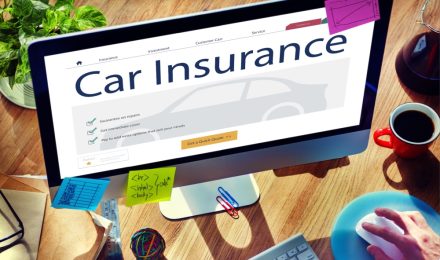In today’s economy, finding ways to cut costs is a priority for many. With rising fuel prices, it’s a relief to know there’s potential to lower our car insurance expenses. Achieving savings on insurance requires a careful comparison of rates and coverage.
- Evaluate Your Deductible
The deductible is your out-of-pocket expense before your insurer covers any damage or loss. Especially for auto insurance, it’s wise to assess if your car’s value exceeds your debt on it. Always compare rates and coverage before adjusting your policy.
- Drive Less
Insurance companies often offer discounts for vehicles with low annual mileage (typically between 5,000 and 8,000 miles). However, this doesn’t apply to company vehicles.
- Exclude High-Performance and Collectible Cars
Removing high-performance and collectible cars from your policy can lower rates since these vehicles are costlier to repair. This adjustment can decrease your overall insurance cost.
- Consider Life Insurance
Some insurers provide discounts for adding life insurance, offering peace of mind for your beneficiaries. Assess the value you get from higher coverage against the premium costs. If the policy seems expensive, getting a quote for life insurance alone might be beneficial.
- Young Drivers and State Requirements
Insurance rates can vary for drivers under 25 and those without a driving history. State-specific auto insurance requirements also play a crucial role in determining your premium.
- Utilize Online Resources
The internet simplifies the process of finding the best auto insurance rates. With patience and discretion about personal information, searching online can also uncover numerous discounts.
- Buy a New Car
Insurance companies sometimes offer discounts to owners of new cars. Older, less safe cars might lead to higher insurance premiums.
- Compare Providers
The key to finding affordable auto insurance is comparison shopping. Rates vary across companies, so it’s beneficial to compare quotes for the same coverage.
- Understand Your Coverage Needs
Be clear about what you need from your insurance. Comprehensive coverage, for example, covers damages from non-collision events and may include protection for specific car parts.
- Leverage Your Credit Score
A good credit score can lead to lower insurance rates, as it reflects financial reliability. Conversely, a poor credit score can result in higher premiums.
- Marital Status
Insurance costs can differ based on marital status, with married individuals often receiving lower rates. The savings could make the cost of a marriage license a worthwhile investment.
- Consolidate Policies
Having multiple insurance policies can be costly. Consolidating them into a single policy can save money.
- Choose Appropriate Coverage
Your insurance premium is influenced by the level of coverage you select. It’s essential to choose coverage that meets your needs without overextending.
- Maintain a Clean Driving Record
A clean driving record can qualify you for lower rates, as it indicates lower risk to insurers. Improving your driving record can lead to significant savings over time.
- Seek Home and Auto Insurance Discounts
Some insurers offer discounts or waivers for combining home and auto insurance. Ensuring both under the same policy and adhering to renewal guidelines can provide savings.
Car insurance can be costly, but by keeping accurate records, comparing quotes, and understanding policy laws, you can find opportunities to reduce your premiums. Avoid frequent coverage changes to prevent premium increases.
In today’s economy, finding ways to cut costs is a priority for many. With rising fuel prices, it’s a relief to know there’s potential to lower our car insurance expenses. Achieving savings on insurance requires a careful comparison of rates and coverage.
- Evaluate Your Deductible
The deductible is your out-of-pocket expense before your insurer covers any damage or loss. Especially for auto insurance, it’s wise to assess if your car’s value exceeds your debt on it. Always compare rates and coverage before adjusting your policy.
- Drive Less
Insurance companies often offer discounts for vehicles with low annual mileage (typically between 5,000 and 8,000 miles). However, this doesn’t apply to company vehicles.
- Exclude High-Performance and Collectible Cars
Removing high-performance and collectible cars from your policy can lower rates since these vehicles are costlier to repair. This adjustment can decrease your overall insurance cost.
- Consider Life Insurance
Some insurers provide discounts for adding life insurance, offering peace of mind for your beneficiaries. Assess the value you get from higher coverage against the premium costs. If the policy seems expensive, getting a quote for life insurance alone might be beneficial.
- Young Drivers and State Requirements
Insurance rates can vary for drivers under 25 and those without a driving history. State-specific auto insurance requirements also play a crucial role in determining your premium.
- Utilize Online Resources
The internet simplifies the process of finding the best auto insurance rates. With patience and discretion about personal information, searching online can also uncover numerous discounts.
- Buy a New Car
Insurance companies sometimes offer discounts to owners of new cars. Older, less safe cars might lead to higher insurance premiums.
- Compare Providers
The key to finding affordable auto insurance is comparison shopping. Rates vary across companies, so it’s beneficial to compare quotes for the same coverage.
- Understand Your Coverage Needs
Be clear about what you need from your insurance. Comprehensive coverage, for example, covers damages from non-collision events and may include protection for specific car parts.
- Leverage Your Credit Score
A good credit score can lead to lower insurance rates, as it reflects financial reliability. Conversely, a poor credit score can result in higher premiums.
- Marital Status
Insurance costs can differ based on marital status, with married individuals often receiving lower rates. The savings could make the cost of a marriage license a worthwhile investment.
- Consolidate Policies
Having multiple insurance policies can be costly. Consolidating them into a single policy can save money.
- Choose Appropriate Coverage
Your insurance premium is influenced by the level of coverage you select. It’s essential to choose coverage that meets your needs without overextending.
- Maintain a Clean Driving Record
A clean driving record can qualify you for lower rates, as it indicates lower risk to insurers. Improving your driving record can lead to significant savings over time.
- Seek Home and Auto Insurance Discounts
Some insurers offer discounts or waivers for combining home and auto insurance. Ensuring both under the same policy and adhering to renewal guidelines can provide savings.
Car insurance can be costly, but by keeping accurate records, comparing quotes, and understanding policy laws, you can find opportunities to reduce your premiums. Avoid frequent coverage changes to prevent premium increases.



